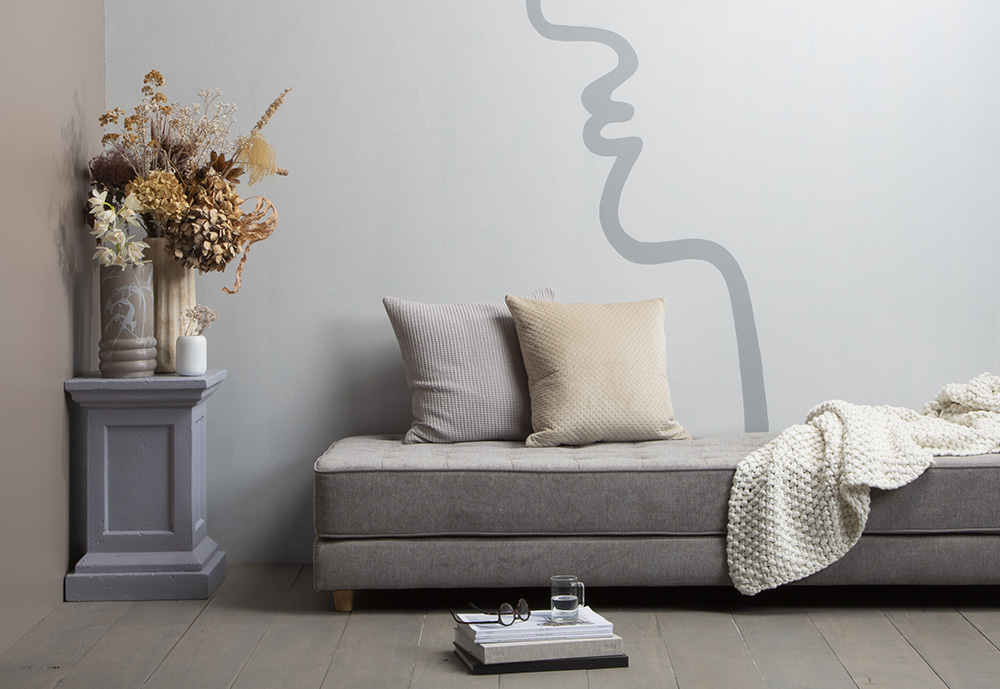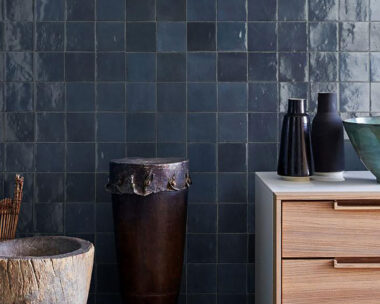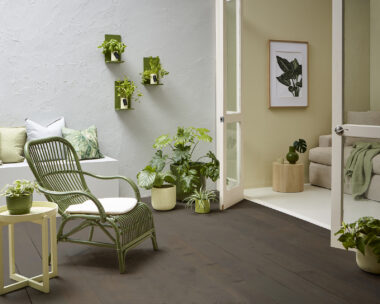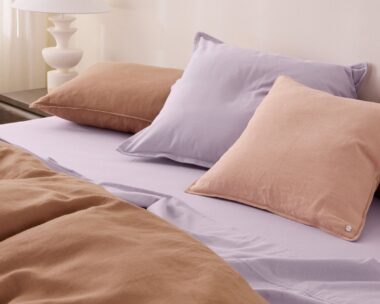With our busy modern lives and our homes increasingly being used as workplaces and classrooms, the idea of clear surfaces, monotone neutrals and sleek lines can seem quite liberating. Then you might think about children’s toys and school bags, masses of laundry, laptops, phone chargers and all those memos you have stuck to assorted surfaces and decide minimalism is not for you.
The good news is the concept of minimalism in our homes is evolving. It no longer needs to mean stark white on white, de-personalised spaces. You can adapt the concepts of minimalism to suit your everyday lifestyle, to create vibrant functional, liveable spaces that still feature your favourite things, and are relaxing to be in.
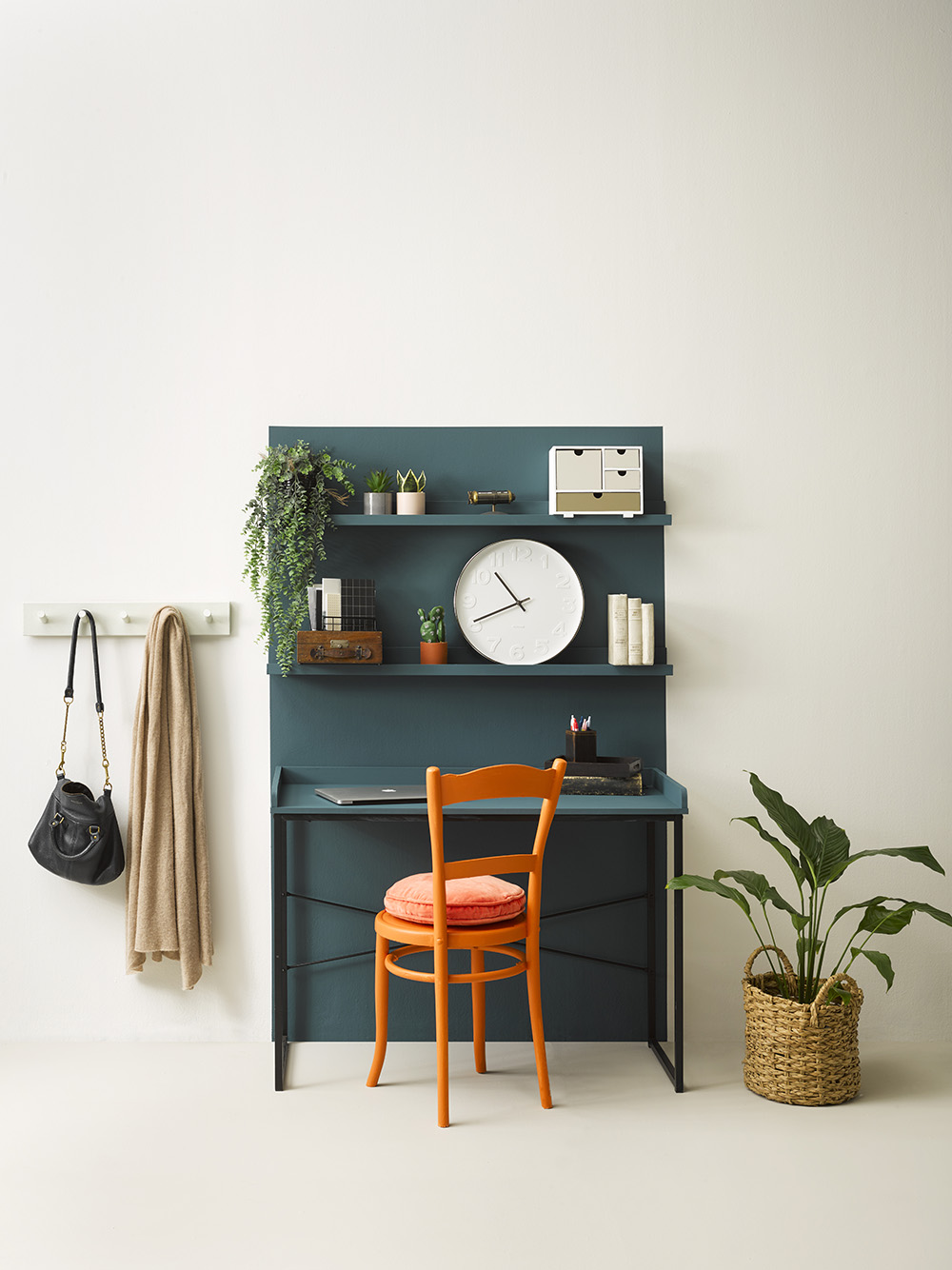
A colour block of Resene Fast Forward helps contain this workspace to minimalist necessities while still being a vibrant appealing place to work. The main wall is Resene Sea Fog, the floor is Resene Truffle and the chair is Resene Jailbreak. Project by Annick Larkin, image by Melanie Jenkins.
Choose your space
If a minimalist approach to your home decor and design is a change of direction for you, it’s probably a good idea to focus on a single space to begin with to avoid becoming overwhelmed.
A home office could be a good place to start as it’s a confined space, and you should be able to see a great result for less effort than you might need in a master bedroom, kitchen or living area. An ensuite or laundry can a satisfying place to start, or even just a benchtop or cabinet that needs to have some order restored.
Generally speaking, starting with a smaller space that is used by fewer people is a good choice. You have a reasonably confined space to work with as you get your minimalist design ideas refined and you don’t have to juggle the requirements of too many family members!
The next step is to think about the main function of your chosen space and who will use it. From there start planning out what you need in the space, what you want it to look like, and how you will bring the two together.
Having a plan is key to keeping true to your minimalist vision while making sure it fits with your life!
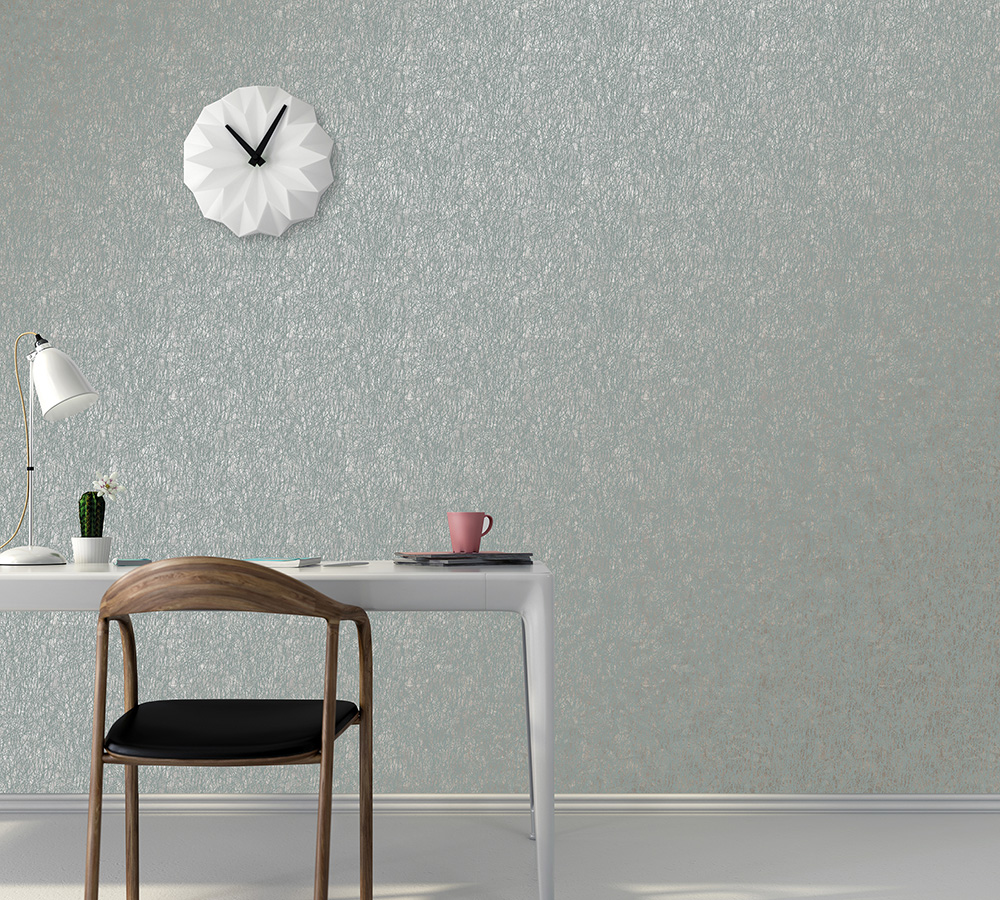
The subtle texture of Resene Wallpaper Collection 64660 is both neutral yet visually enticing making sure this minimalist office area is anything but plain. It is paired with flooring in Resene Alabaster, a simple desk in Resene White and a wooden chair stained in Resene Colorwood Natural.
Adopt the mindset
To begin with, moving to a minimalist interior will seem as though it’s as much as decluttering as it is about design. It’s become quite entwined with our desire to live more sustainably and just have less “stuff”.
It’s why starting with a smaller space is a good idea, so you’re not having to make too many hard decisions at once about what to keep, donate or dispose of.
It’s also important to remember you’re not designing a show home. Liveable minimalism isn’t about removing all traces of you and your family from your home. It’s about simplifying your spaces, and making considered deliberate choices about what you need and want, and how to work those things into a space you want to be in.
When you’re considering how to create a warm minimalist space consider some of these design principles:
Connect with nature. Leafy green plants will soften the edges of a white or neutral background. But also think about wood grains, which could be stained in Resene Colorwood Whitewash or Resene Colorwood Natural.
Add texture and pattern. Add a design with Resene wallpaper, re-cover cushions in soft cottons, wool and linens, and mix textures so your eye is drawn to the minimal items you add to your space.
Quality over quantity. This is really at the heart of any minimalist design. Hero a few key pieces of your favourite decor that have meaning.
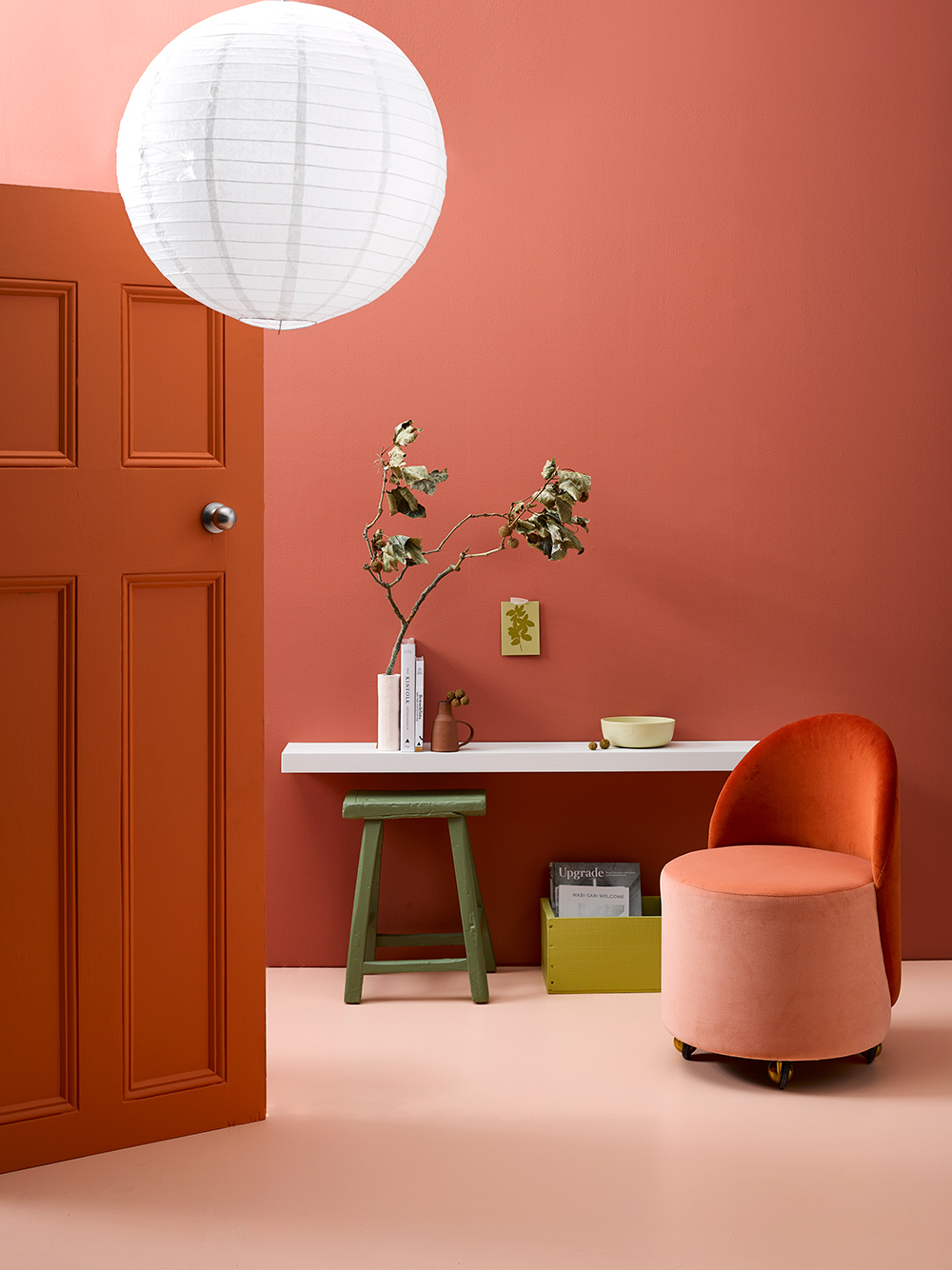
The walls of this sitting area are painted in Resene Apple Blossom, the floor is Resene Wax Flower, the door is Resene Sebedee and the shelf is Resene Quarter Tea. The stool is Resene Woodland and the storage crate is Resene Gingko. Project by Gem Adams, image by Wendy Fenwick.
Storage, storage, storage
Storage is really key to be able to maintain a practical minimalist style in your family home, particularly if you have children, pets or other housemates. The secret to having clean lines and clutter free surfaces, is to have a place to store all those life necessities and to put those things back in that place.
It can take a bit of planning and forethought, particularly if your home is not naturally blessed with vast areas of storage. Mine your home for previously untapped areas of storage – under beds, roof spaces, under the house, extra wardrobe shelving.
Also look at the furniture you have, and how it might be better utilised for storage. Could that set of drawers filled with old baby clothes, be repurposed to store work essentials and spare batteries?
You might find you need to buy new or upcycled cabinets for additional storage. There’s no minimalist rule that says you mustn’t buy new things to add to your space. Instead, it’s about taking a considered approach to what you add to your space, the purpose it serves and what it brings to your overall design. Your storage can even become the hero conversation piece in your space.
Top tip: Finding additional storage can make it tempting to hang on to things you “might need in the future”. As a general rule, if you haven’t used something in five years you’re probably not going to use it in the next five. When it comes to clothes – if you haven’t worn it in a year consider upcycling, donating or gifting.
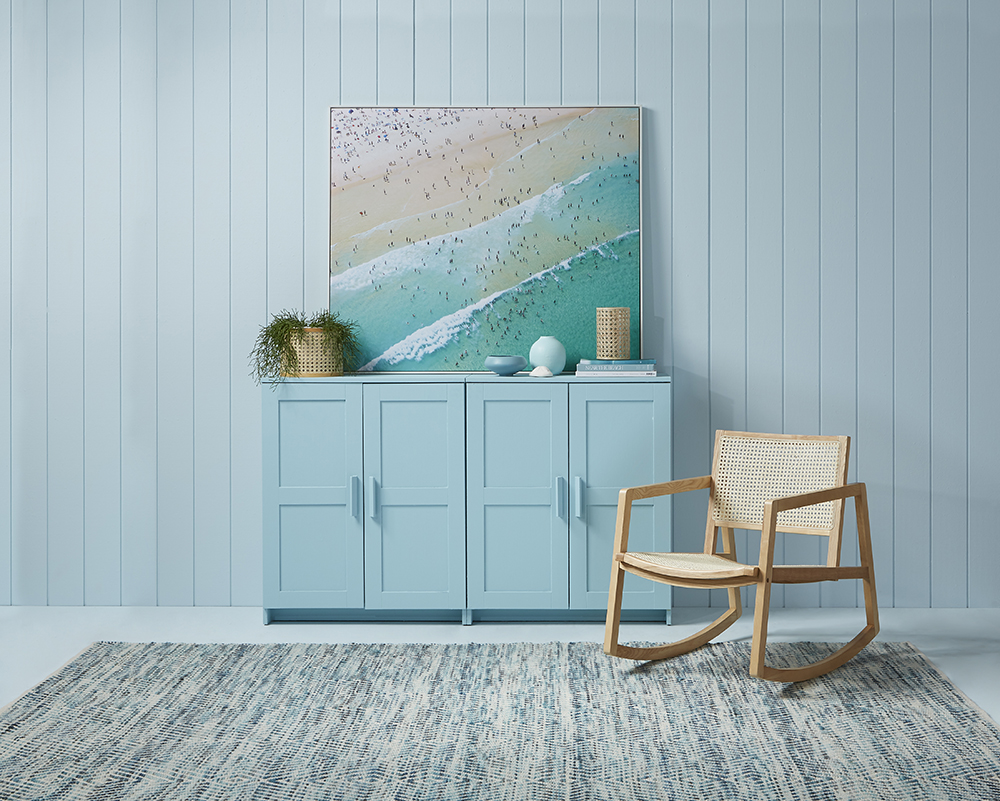
The texture of this tongue-and-groove wall in Resene Cut Glass and the combined colour palette of the storage unit in Resene Kumutoto and the art, create layers of focused interest while still being minimalist. The floor is also painted in Resene Cut Glass. Project by Vanessa Nouwens, image by Bryce Carleton.
The place for colour
Minimalism is no longer defined by a slightly chilly, white-centric colour palette. Instead it’s about keeping to a simple colour palette that still embraces natural tones, but still has room for the colours you love and reflect your household personality.
Green is a popular colour among minimalists, because it works with the traditional backdrop of white with pale woods to add freshness and life. Try teaming Resene Caper or Resene Sushi with Resene Alabaster walls and wood features stained in Resene Colorwood Driftwood.
You could put a warmer spin on this Scandi-influence idea by opting for a darker green like Resene Bush with darker timber stained in Resene Colorwood Teak.
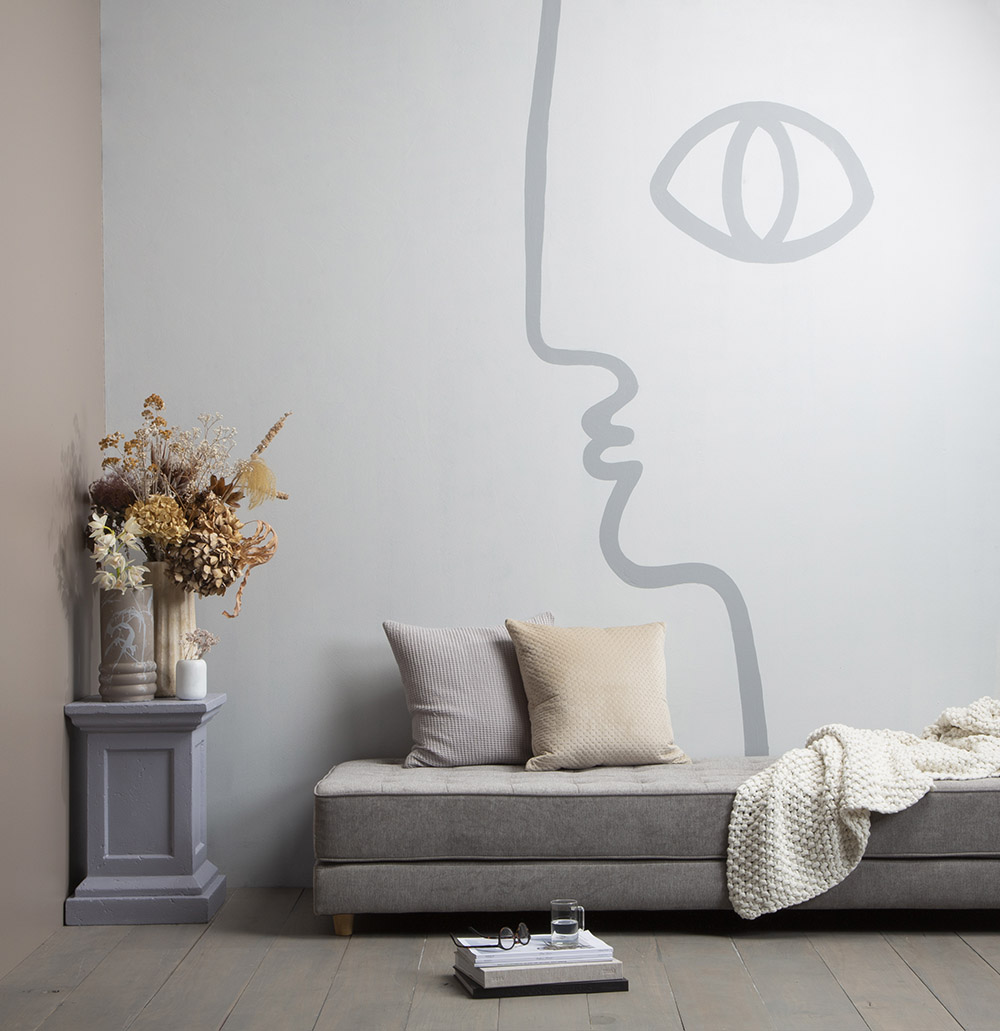
An unexpected combination of Resene Quarter Surrender on the back wall and Resene Americano on the side wall create a soothing backdrop for the Bauhaus face design. The result is a calm sitting area that is uncluttered but full of personality. The floor is Resene Colorwood Mid Greywash, and the face design is Resene Grey Chateau. Project by Kate Alexander, image by Bryce Carleton.
To move into less traditional minimalist territory, try a monochrome palette that includes three to four shades of a similar colour. Keep to a natural themed palette with sunbaked earthy shades like Resene Twizel then add decor detail in the paler peach of Resene Beethoven and bolder notes in Resene Crail then finish with trim in a warm white like Resene Quarter Spanish White.
To simplify this colour approach even further, choose a full strength Resene colour and use it in different places in its different strengths from an eighth all the way through to double or even triple. For example, if you wanted a grey-hued room, try Resene Stack on your walls, with a hero furniture item in Resene Double Stack, and decor items in Resene Quarter Stack. Add trims in Resene Alabaster to pull everything into focus, and if your minimalist aesthetic allows, you could throw in a pop of golden Resene Hot Toddy or burnt orange Resene Kamikaze to hero a certain object or furniture item.
Your palette and design are still minimalist, but you’ve added warmth, personality and drama.
Top tip: Choosing a hero item for each minimalist space you create, can help refine the rest of your choices in colour and design. It could be an object or piece of art, a wallpapered feature wall or an item of furniture. Keep everything focused on showcasing that piece and your choices will become more minimalist as others pieces fall away. Make your hero item something that really speaks to you or is part of your family history and won’t date.
For help getting started with your decorating project, ask a Resene expert at your local Resene ColorShop or on the Resene website with the free Resene Ask a Colour Expert service, www.resene.co.nz/colourexpert. View hundreds of decorating ideas from other homeowners online, www.habitatbyresene.co.nz.
